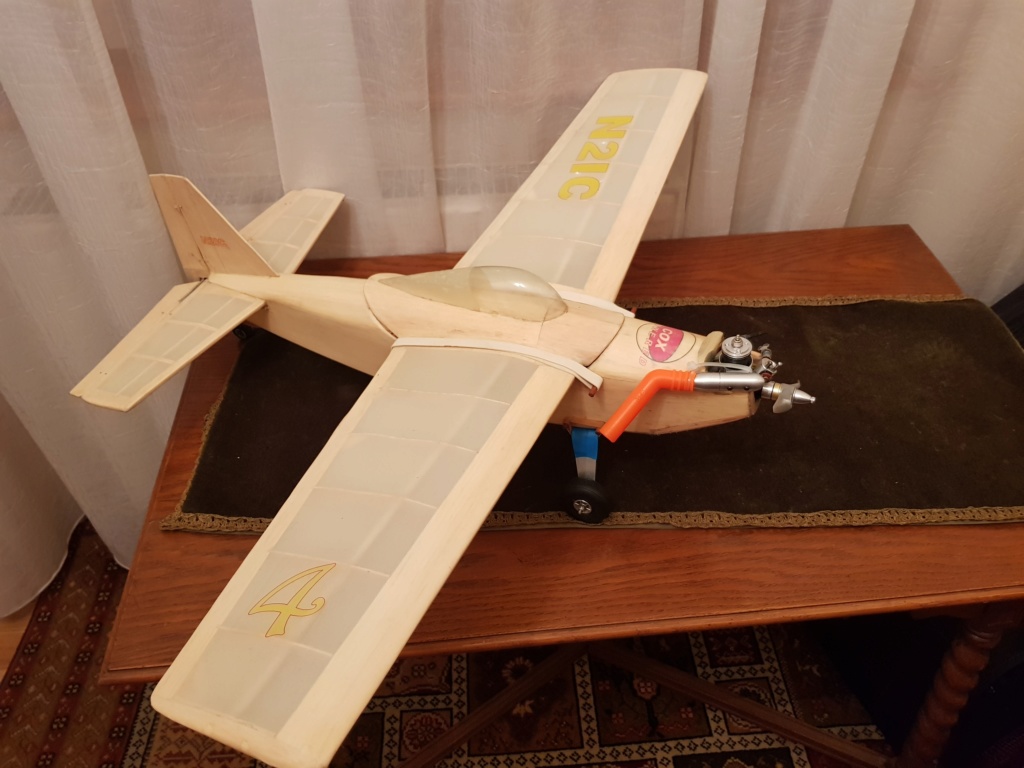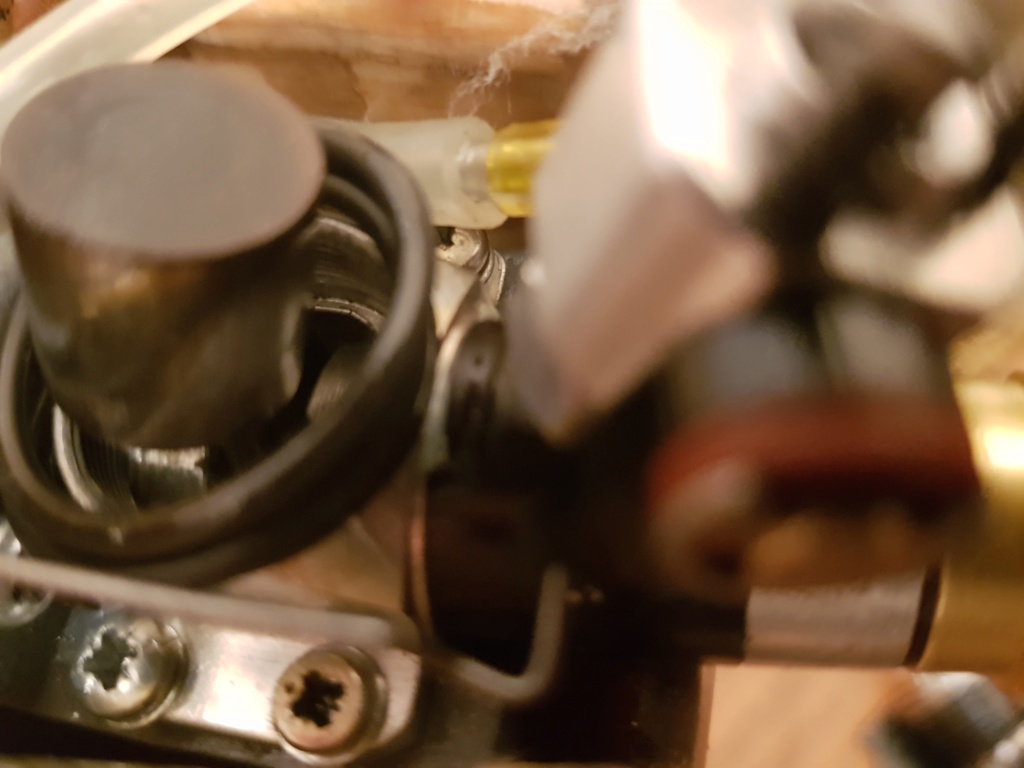Log in
Search
Latest topics
» My latest doodle...by batjac Today at 10:05 pm
» Retail price mark-up.. how much is enough?
by gkamysz Today at 9:29 pm
» Happy 77th birthday Andrew!
by roddie Today at 9:22 pm
» Roger Harris revisited
by rsv1cox Today at 3:38 pm
» My N-1R build log
by GallopingGhostler Today at 3:04 pm
» Tee Dee .020 combat model
by 1/2A Nut Today at 2:43 pm
» Chocolate chip cookie dough.........
by roddie Today at 1:13 pm
» Purchased the last of any bult engines from Ken Enya
by sosam117 Today at 11:32 am
» Free Flight Radio Assist
by rdw777 Today at 9:24 am
» Funny what you find when you go looking
by rsv1cox Wed Nov 20, 2024 3:21 pm
» Landing-gear tips
by 1975 control line guy Wed Nov 20, 2024 8:17 am
» Cox NaBOO - Just in time for Halloween
by rsv1cox Tue Nov 19, 2024 6:35 pm
Cox Engine of The Month
Goo-proofing your Tee Dee 09
Page 1 of 1
 Goo-proofing your Tee Dee 09
Goo-proofing your Tee Dee 09
My balsa planes are prone to suffer from castor splashed on the fuselage in exhaust gases, polyurethane spray applied on balsa and Oracover notwithstanding..
Worried about castor seep into the balsa cowl of some of my unobtainium classic planes like the Cosmic Wind drove me to goo-proofing the exhaust muffler on the engine.

The muffler in the cylinder neck area is one (1) where castor finds its way flowing down to the engine cowl. Another (2) is the black top ring on the muffler that, if does not contact the bottom cylinder fin with some remnant tension, will give way to castor seeping through the gaps and getting drifted in the air blast by the prop, landing on the fuselage. Third (3) is the muffler outlet that, if not diverted sideways will smear castor on the fuselage.
My solutions to the above:
Ad 1.: place a hight temp O-ring of 16*1.5mm in the cylinder groove below the exhaust port. This will ensure a seal between the cylinder and muffler neck, retaining the castor in the muffler neck thus preventing it from accumulating in the engine cowl:

Ad 2.: place 1 or 2 high temp O-rings of 19*2mm on the crankcase neck where the muffler sits lose without the rings. The rings will keep the muffler pushed upwards and its top ring will sit on the lowermost cylinder fin tight, improving the seal around both the outer and inner circumference of the ring.

Ad 3. Pull an oversize, 10mm outlet dia silicone exhaust extender on the muffler outlet, diverting the exhaust gases off the fuselage. The muffler body being tapered will not retain the extender unless it is fixed with ziplocks ( or waddayacall this plastic ratchet lock band):

My SPI cylinder performance was only slightly impacted by the muffler addition..it spins the 6.5x5 APC at 16k and 15.7k with and without the muffler respectively. Still enough power to pull the Cosmic Wind with authority.
No disruptive technical inventions with the above are assumed..only to throw in a topic into the off-season CEF discussions

Worried about castor seep into the balsa cowl of some of my unobtainium classic planes like the Cosmic Wind drove me to goo-proofing the exhaust muffler on the engine.

The muffler in the cylinder neck area is one (1) where castor finds its way flowing down to the engine cowl. Another (2) is the black top ring on the muffler that, if does not contact the bottom cylinder fin with some remnant tension, will give way to castor seeping through the gaps and getting drifted in the air blast by the prop, landing on the fuselage. Third (3) is the muffler outlet that, if not diverted sideways will smear castor on the fuselage.
My solutions to the above:
Ad 1.: place a hight temp O-ring of 16*1.5mm in the cylinder groove below the exhaust port. This will ensure a seal between the cylinder and muffler neck, retaining the castor in the muffler neck thus preventing it from accumulating in the engine cowl:

Ad 2.: place 1 or 2 high temp O-rings of 19*2mm on the crankcase neck where the muffler sits lose without the rings. The rings will keep the muffler pushed upwards and its top ring will sit on the lowermost cylinder fin tight, improving the seal around both the outer and inner circumference of the ring.

Ad 3. Pull an oversize, 10mm outlet dia silicone exhaust extender on the muffler outlet, diverting the exhaust gases off the fuselage. The muffler body being tapered will not retain the extender unless it is fixed with ziplocks ( or waddayacall this plastic ratchet lock band):

My SPI cylinder performance was only slightly impacted by the muffler addition..it spins the 6.5x5 APC at 16k and 15.7k with and without the muffler respectively. Still enough power to pull the Cosmic Wind with authority.
No disruptive technical inventions with the above are assumed..only to throw in a topic into the off-season CEF discussions

Last edited by balogh on Fri Jan 03, 2020 2:30 pm; edited 6 times in total (Reason for editing : Typos corrected)

balogh- Top Poster



Posts : 4958
Join date : 2011-11-06
Age : 66
Location : Budapest Hungary
 Re: Goo-proofing your Tee Dee 09
Re: Goo-proofing your Tee Dee 09
Very good idea. Thanks for this 

Levent Suberk- Diamond Member

- Posts : 2265
Join date : 2017-12-24
Location : Türkiye
 Re: Goo-proofing your Tee Dee 09
Re: Goo-proofing your Tee Dee 09
Thanks Levent, it is freezing here but I will test run it in the garage and check how efficient goo-control it is.

balogh- Top Poster



Posts : 4958
Join date : 2011-11-06
Age : 66
Location : Budapest Hungary
 Similar topics
Similar topics» fuel proofing with this
» RC build of a Guillows Porter PC-6 for .020 Pee Wee
» Fuel Proofing
» Gnat rc plane
» Castor proofing external servos
» RC build of a Guillows Porter PC-6 for .020 Pee Wee
» Fuel Proofing
» Gnat rc plane
» Castor proofing external servos
Page 1 of 1
Permissions in this forum:
You cannot reply to topics in this forum

 Rules
Rules







